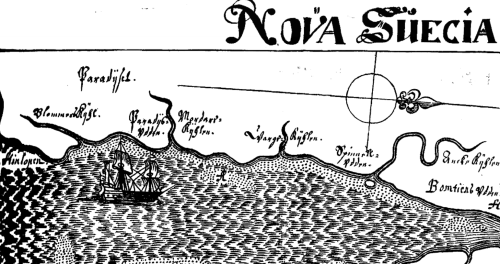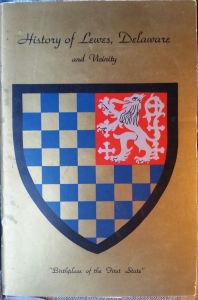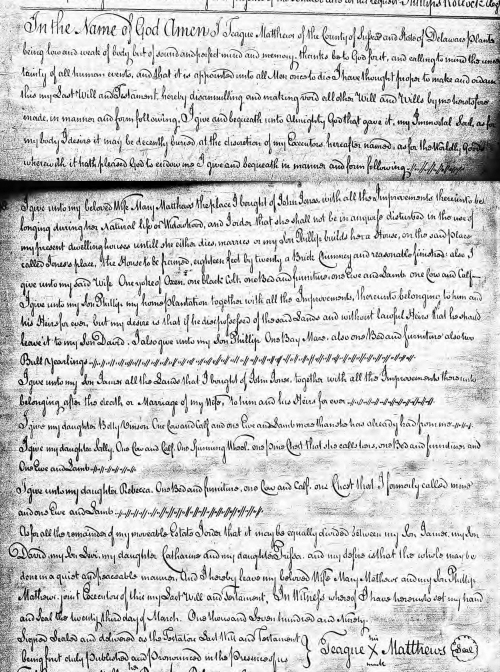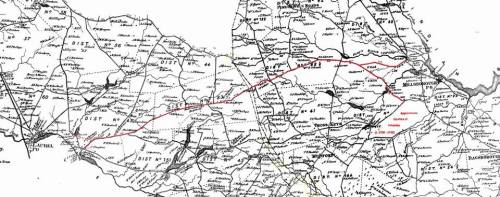In a previous post, I examined the English name Whorekill, which has been explained away as being a corruption of Hoorn (a Dutch city) + Kill (Dutch for creek), and concluded that the original Dutch name Hoeren-kil or Hoere kill most likely referred to whoring or prostitution on the part of the local Indian women, not the city of Hoorn. I also pointed out that the term hore could also be translated “mud” in Middle Dutch, the ancestor of the Dutch language spoken during the era in question.
A similar controversy surrounds the English name Murderkill, which is still in use today. The name dates back to the mid-17th century, when the Dutch and the Swedes had settlements along the Delaware River (then known as the Zuydt Rivier, or South River). Kill or kil meant creek, but the origin of the name Murder Creek is a bit more complicated.
Confusingly, the river and associated sites (e.g., a Quaker meeting house) were called both Murtherkill and Motherkill (sometimes substituting the suffix -kiln), murther being an archaic term for murder. This lends some credence to the theory that the Dutch originally named the creek Moeder Kill or Mother Creek, which has been advanced in the News Journal and elsewhere. The similarity between moeder and murder is undeniable, but I think the admittedly limited evidence suggests that the creek was named after murder (for whatever reason); therefore the English names Murtherkill and Murderkill are accurate successors, and it is Motherkill that was the corruption.
The earliest written form of the name comes from the Swedes. Peter Lindstrom’s map of New Sweden, generally agreed to date to the 1650s, includes a waterway labeled Mordare Kijhlen — or, in English, Murderer Creek. The name Moeder Kill or anything similar simply does not appear in any records of the time.

Published in 1691, Lindestrom’s map of the Delaware River is believed to date to the 1650s. Notice Cape Henlopen at the far left or southernmost portion of the map.
Following the English occupation of the territory in the 1660s, the name became Murther-kill, the English “murther” being an accurate translation of the Swedish mordar. This is the earliest English name for the waterway; Motherkill came later.
I believe it was the name and pronunciation of Murtherkill which gave birth to the alternative name Motherkill or Motherkiln. A number of traveling Quakers wrote of visiting the Motherkill or Motherkiln meeting during the mid- to late 1700s. Yet the names Murtherkill and Murderkill also appear in records of that era. Although I haven’t examined all of the sources in which the various names appear, based on those I’ve read it seems like locals and official records tended to use Murtherkill or Murderkill more often, which visiting preachers and the like may have misheard as Motherkill. For example, William Reckitt mentioned attending a meeting at Motherkill in 1758. In 1763, Daniel Stanton recorded the name as Mother-kiln, and in 1766, John Woolman spelled the name Motherkill. Job Scott recorded the name Mother-kill as late as 1790, yet the local abolitionist Warner Mifflin mentioned the Murtherkill Meeting in 1797. Generally speaking, the creek or river tended to be called Murderkill more often than the other variations during this period, and it is this name that survives to this day.
As to why the Dutch and/or Swedes named a creek after murder or murderers, vague legends involving a massacre of the local Indians have surfaced in sources of questionable reliability, but even the earliest references to these legends seem highly speculative, and were perhaps more an attempt to explain an odd name than to preserve genuine traditions. The possible stories behind both Murderkill and Whorekill might be worthy of a future post or two.
– Chris Slavens





